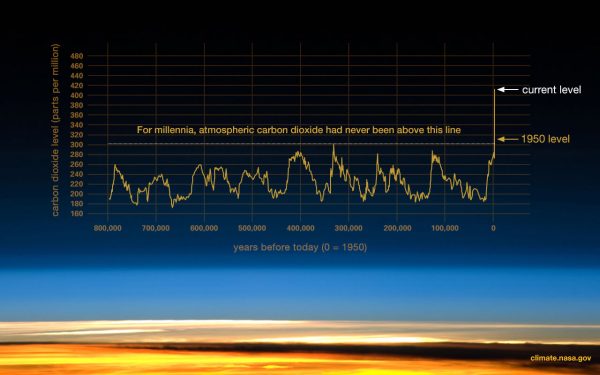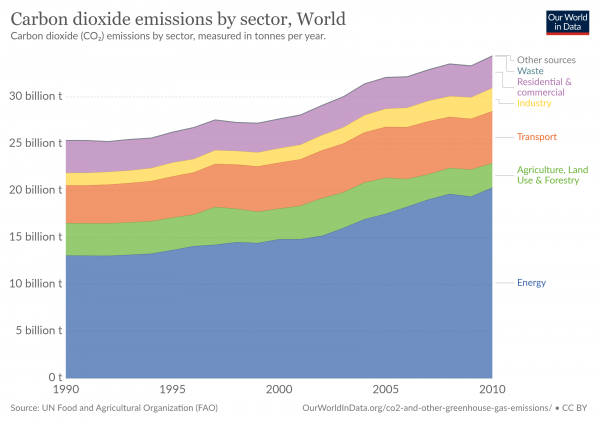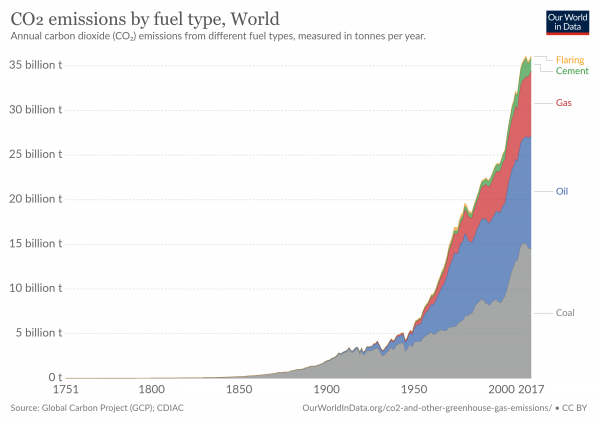What is Climate Change?
Climate change is a broad term used to refer to changes in the Earth’s climates, at local, regional, or global scales, and can also refer to the effects of these changes. In recent decades, the term ‘climate change’ is most often used to describe changes in the Earth’s climate driven primarily by human activity since the pre-Industrial period (c. 1850 onwards), particularly the burning of fossil fuels and removal of forests, resulting in a relatively rapid increase in carbon dioxide concentration in the Earth’s atmosphere. 1 2
Global warming is a term often used interchangeably with climate change, as it is one of the most important measures of global changes. Global warming refers to the rise in average global temperatures, which is linked to significant impacts on humans, wildlife, and ecosystems around the world. Because there are more factors and impacts than only rising surface temperatures, the term climate change is used to include these additional impacts. There is strong consensus among scientists, representing 97% of actively publishing climate scientists, that human influence has been the dominant cause of observed warming trends since the 20th century. 3
The concentration of carbon dioxide in the atmosphere has risen from hovering around 280 parts per million (ppm) in pre-Industrial time, to 413 ppm as of early 2020. 4 5 This concentration of carbon dioxide is unprecedented in recorded history. Scientists have reported that we need to return to a ‘safe’ concentration of 350 ppm by 2100 in order to stabilize global warming. 6

Video
Context
The largest anthropogenic (human caused) source of carbon dioxide emissions is the global energy system, which means transforming the global energy system is one of the most significant ways to reduce greenhouse gas emissions and mitigate climate change.

As of 2019, approximately 81% of the world’s primary energy supply still comes from fossil fuels, (specifically, coal, oil, and natural gas), which result in carbon emissions both upstream (in the extraction and production of the energy) and downstream (during the final consumer use of the energy). 7 Continued reliance on fossil fuel-based energy sources is a barrier to emissions reductions, particularly as energy demand continues to increase around the world.

Why does a global temperature increase of 1.5°C matter?
Global warming of 1°C or 1.5°C represents an average across the planet – many places will warm faster, and see far greater temperature increases. For example, the Arctic is warming 2-3 times faster than any other place on Earth. The effects of global heating are far-reaching, including rising sea levels, glacier retreat, changes in the timing of seasonal events (plants flowering, migration patterns), and a rise in the frequency and severity of extreme weather events. These categories of impacts have direct and indirect consequences on people and wildlife. Direct consequences include displacement of people and communities due to sea level rise and extreme weather events, whereas indirect consequences may include disruptions to economic development, food production, escalation in water crises, and increased public health risks.
The impacts of climate change will not be evenly felt around the world – people living in the poorest countries and in geographically vulnerable regions (such as small-island states) will be first and most significantly impacted. This is because communities living in poverty are more likely to be exposed to environmental hazards, are often more dependent on natural resource-based livelihoods such as agriculture, and have fewer resources to cope with climate impacts.
Each fractional degree of warming also results in outsized impacts on biodiversity and species extinction, and disturbances in natural ecosystems. 8 Even if carbon emissions in the atmosphere can be absorbed and stabilized over a long period of time, many of the impacts on wildlife, land, water, and people will be irreversible once they occur, which makes halting the release of greenhouse gas emissions, and limiting global warming as much as possible, the first priority.